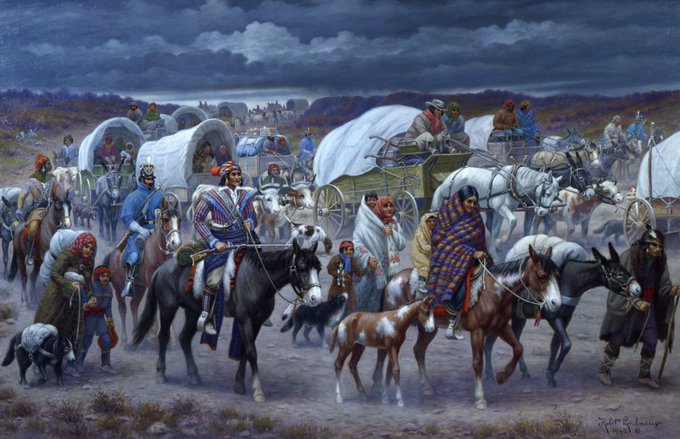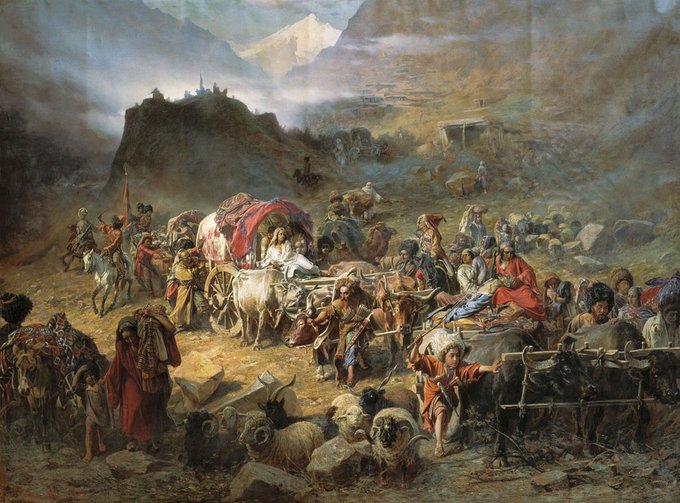1860sのTwitterイラスト検索結果。 131 件中 2ページ目
“Under the thunder-dark, the cicadas resound...
The kisses not for our mouths, light the dark summer.”
— Louise Bogan
from “Dark Summer”
✨✨✨
🎨Jean-Baptiste Camille Corot - A Gust of Wind. 1860s, Pushkin Museum
#wiplift
🧱1860s Amsterdam
Girls with ✨guns & knives✨
💀Vampire hunter and vampire fall in love and hate themselves for it
🗡️A fractured group trying to dismantle the system
🔮Discovery of self and Wanda Maximoff-inspired magic
📚Clockwork Angel but diverse
Art by Sartagos
1860s corset inspired by Foolish !!
rts appreciated !!
@FoolishTweeters #foolishfanart #foolishgamersfanart 🦈
Stripes for the #seaside we’re all the rage in the late #1860s, a nod to #nauticalfashion and the occupational dress of those at sea. This surviving gown in sheer layers, practically carries a fresh breeze in its wake with a hint of salty air @madparisfr #fashionhistory
Not Without My Ghosts: The Artist As Medium - #art inspired by the practices of mediums, spiritualists, & ideas of The Beyond
#exhibition #preview @SheffMuseums :
https://t.co/zL8v6qCVoK
pics: Album Page XIV (1860s) Barbara Honywood
& Healing Painting (2016) Vidya Gastaldon
Did you know the US inspired Russian forced removals? Americans have never heard of the Circassians who are indigenous to the Caucasuses. They were forcibly removed in the 1860s. A Russian official said: “These Circassians are just like your Indians—as untamable and uncivilized”
His pictures of the 1860s often included either nymphs or peasants. The critics preferred peasants & complained if he included mythological creatures. Mother & Child (c1860), Reverie (1860-5) & the Curious Little Girl (1860-4)
Calamitous Cassandra: Trojan Priestess of Apollo cursed to utter true prophecies (including the Fall of Troy), but never to be believed. This week's #TuesdayTale features howling 2 depictions by Frederick Sandys (1860s) plus Evelyn de Morgan (1898 @DeMorganF) & Burne-Jones (1870)
His pictures of the 1860s often included either nymphs or peasants. The critics preferred peasants & complained if he included mythological creatures. Mother & Child (c1860), Reverie (1860-5) & the Curious Little Girl (1860-4)
Charles Howland Hammatt Billings, Landscape with Stream, 1860s https://t.co/NX7ZHMKPTH #charleshowlandhammattbillings
Throughout the 1860s his success & fame grew. In 1867 a major exhibit of his work was shown at the Exposition Universelle. He was appointed Chevalier. Shepherdess & her Flock (1862-3), Louise Millet (c1863) & Study for the Bather (c1863)
Niadas of the Sea (1860s) by French artist Gustave Dore, a child prodigy who was a painter, sculptor, wood graver, illustrator. His prolific output included this early painting that shows nymphs from Greek mythology. There were 3,000 Naiads, children of Titans Oceanus & Tethys.
Teresa O’Day grew up along with the Brooklyn Bridge in the 1860s and '70s. As the Bridge grew, so did the shadow over her neighborhood in southern Manhattan. She was a daughter of immigrants who survived the Irish Famine, yet untimely deaths followed her. https://t.co/RwrvgS5CjC
and i see that the main male silhouette is neoclassical....wide collars and (18th century-like) cravat and short, loose hair
i cant say it is also a victorian, victorian suit is tighter and curvier (or terribly wide in the 1860s)
Longing & Loss: Four versions of 'Orpheus & Eurydice' (priv.coll, 1860s/ Aberdeen Art Gallery, 1869/ Harvard Mus. c.1880/ Salar Jung Mus. c.1890) for this week's #WattsOnWednesday. See superb commentaries on the latter by our friends @VictorianWeb: https://t.co/DmcAB5kCq8




















































